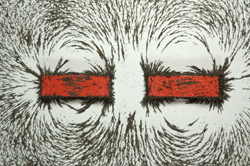NEXT generation of Random Access Memory
When running a software program, the fast Random access memory (RAM) keeps the application accessible and allows users to read from memory, as well as write new data to memory. However, most semiconductor-based RAM is volatile, meaning that it requires constant power supply to operate. If electric power is disrupted, data being held in RAM is lost. On the other hand, MTJs are intrinsically immunised against power supply disturbances. When current is applied perpendicularly to the two layers of ferromagnetic material comprising MTJs , it crosses the insulating barrier between them by a purely quantum effect, the tunnel effect. The relative magnetic field alignment of the separated magnetic materials induces a current path of either high or low resistance. This resistance difference is identified as a stored bit of information which can be preserved when the power supply is disrupted. The integration of CMOS with magnetic memory elements attracted the interest of the NEXT project partners because this new approach offers many advantages. The compact structure of MTJs, but more importantly their high magnetoresistance that is compatible with high-speed sensing using CMOS circuitry, may lead to the consideration of several RAM architecture possibilities. Researchers at the Commissariat à l’Énergie Atomique in France succeeded in overcoming a major stumbling block for their integration based on standard 0.35μm CMOS technology. The limiting availability of processing equipment suitable for CMOS integration, led them to the development of an integration route based on Ion beam etching (IBE). This simple vacuum-compatible technique offered significant advantages for patterning submicron-sized MTJs on silicon substrates up to 200mm in diameter. It was proven to be sufficiently advanced to support accurate etching of a high resolution pattern, but not mature enough to offer the uniformity required for magnetic data storage. As the first components for Magnetic random access memory (MRAM) were just being developed, alternative writing strategies had already been proposed and attracted the attention of investors. The start-up company Crocus Technology was created, which will make available samples of their first prototypes.



